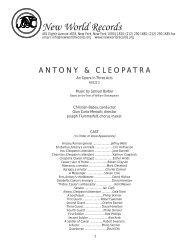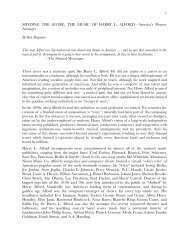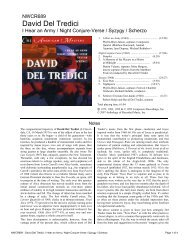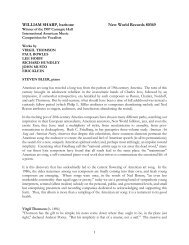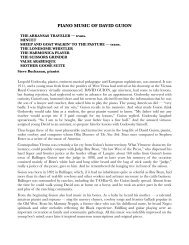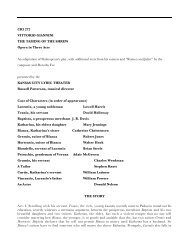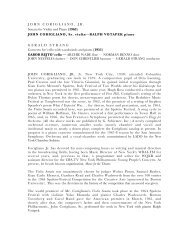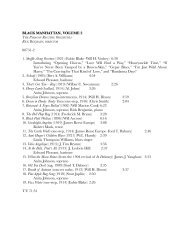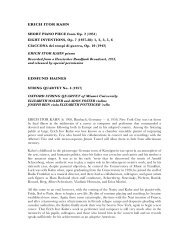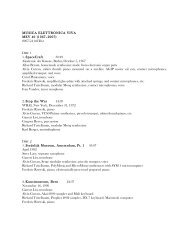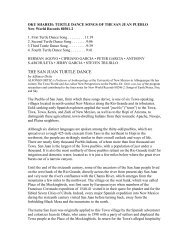Brother, Can You Spare a Dime? - New World Records
Brother, Can You Spare a Dime? - New World Records
Brother, Can You Spare a Dime? - New World Records
You also want an ePaper? Increase the reach of your titles
YUMPU automatically turns print PDFs into web optimized ePapers that Google loves.
solace in commenting on or complaining about the state of their lives rather than in<br />
escaping from reality. Black music of this sort tended to be even more topical, and we<br />
find blues dealing not only with the events and effects of the Depression but also with the<br />
government’s attempts to cope with the disaster. Few of the “alphabetical agencies”<br />
afforded much relief to blacks, as we are told in Big Bill Broonzy’s “WPA Blues” and<br />
Washboard Sam’s “CCC Blues.” But here too we find complaint and lament, often tinged<br />
with humor, rather than protest.<br />
Despite the slow pace of recovery, Americans felt that Roosevelt was doing as much for<br />
them as was humanly possible, and he was reelected by an overwhelming margin in 1936<br />
over Governor Alf Landon of Kansas. The President acknowledged in his second<br />
inaugural address, “I see one-third of a nation ill-housed, ill-clad, ill-nourished.”<br />
Programs of massive federal relief and deficit spending continued, and in the first months<br />
of 1937 it appeared that the Depression was coming to an end. Industrial output was up,<br />
national income was almost twice what it had been four years earlier, and unemployment<br />
dropped to about fourteen percent. But unexpectedly the economic situation worsened<br />
again. In the late summer of 1937 industry experienced a slump almost as severe as in<br />
1929–30, and unemployment abruptly climbed back up to ten million, or almost twenty<br />
percent of the work force.<br />
Roosevelt’s second term was marked by severe labor disorders. Only six percent of the<br />
nation’s workers had been unionized in 1932. Sustained by federal relief programs and<br />
strengthened by provisions of the NRA that empowered workers to organize and bargain<br />
with less fear of reprisal, labor became strong enough to fend for itself when the Supreme<br />
Court declared the NRA unconstitutional in 1935. The first signs of a new militancy had<br />
come in 1934, with strikes in Minneapolis and a general strike in San Francisco. The CIO<br />
(Committee—later Congress—of Industrial Organizations), organized by John L. Lewis<br />
as a sort of superunion for greater strength, encouraged members to use all means at their<br />
disposal to press their demands. By 1937 there were many bitter struggles, with<br />
management often using force to curb labor, and workers retaliating with the new tactic<br />
of the sit-down strike, which effectively prevented management from bringing in<br />
nonunion workers. In 1937 alone the NLRB (National Labor Relations Board),<br />
established in 1935 to mediate labor disputes, was asked to intervene in more than thirtytwo<br />
hundred strikes, involving a million and a half workers.



